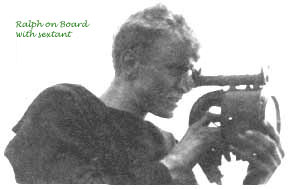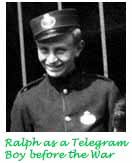

|
|||||
| Ralph Stobart Robson, signalman, life in the British Royal Navy World War Two, sinking of Prince of Wales and the Repulse, Singapore | |||||
|
|||||
|
|||||
|
After steaming for some time we eventually saw a mountainous land - the ship had reached Madagascar and was now slowly steaming towards Tamatave, the only real port on the East Coast. Here we spent the next few days lounging around the deck and sunbathing, where we carried our own rations and fed ourselves until the end of the third day when the ship was ordered to return north to Diego Suarez, a port at the extreme tip of the island. This port was supposed to be the biggest anchorage in the world and certainly seemed like it. The ship steamed it's way through a narrow entrance and amongst the fairly large number of other vessels, finally anchored. Finally a little barge-like craft took us and our gear off - our part in the invasion of Madagascar was over and we had seen and heard nothing. The craft ran alongside what turned out to be a L.S.I. (Landing Ship Infantry) which turned out to have been an Irish Sea ferry from Dublin to Holyhead. Three days were spent aboard and I was co-opted into watches on the bridge. However, I also got three days leave in Diege Suarez but it hadn't much to offer. The buildings were a sort of compromise between Frenaf and the Wild West and there wasn't much to be seen besides an interesting crowd of natives, especially the women. One item of interest was a silver painted upright tank which stood along the shore and was alleged to contain rum - the ingredients were certainly grown there but "Jack" was certainly not allowed to get any! The Navy, so we heard, had recently been carrying out experiments to see if this stuff would propel petrol landing craft. One day I was on watch and idly looking harbourwards when I noticed a landing craft coming towards the ship. The sailor at the helm stopped the craft and went down the hatchway that led to the engine before re-emerging to take the wheel. The craft then took an erratic course and finally started to turn in a wide circle, so I used the binoculars on the bridge to observe him just lying there against the wheel. The Yeoman was called to take a gander. "There's something wrong with that lad", he said and called down to some of the craft moored alongside for somebody to investigate. A boat eventually left and went alongside the craft to discover that the helmsman was in fact drunk. If it hadn't been well known that he was normally a temperance man things would have been extremely hard for him. I never did find out if the local rum was ever used for craft fuel, but he had certainly put it to more traditional use. |
|||||
|
|||||
